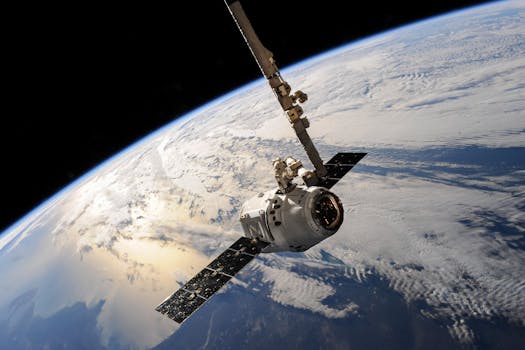
The Future of Satellites: Revolutionizing Global Connectivity
The future of satellites is expected to play a significant role in revolutionizing global connectivity, enabling faster and more reliable communication, navigation, and remote sensing. With the increasing demand for satellite-based services, the industry is witnessing a significant transformation, driven by advancements in technology, decreasing costs, and innovative business models.
Introduction to the Future of Satellites
Satellites have been a crucial part of modern technology, providing a wide range of services, including communication, navigation, weather forecasting, and remote sensing. The future of satellites is expected to be shaped by several factors, including the growing demand for satellite-based services, advancements in technology, and the increasing participation of private companies in the industry.
One of the key trends shaping the future of satellites is the emergence of small satellites, also known as smallsats. Smallsats are smaller, lighter, and less expensive than traditional satellites, making them an attractive option for companies and organizations looking to launch satellites. Smallsats are also more agile and can be launched quickly, allowing for faster deployment and testing of new technologies.
Advancements in Satellite Technology
Advances in satellite technology are expected to play a significant role in shaping the future of satellites. One of the key areas of advancement is in the development of new propulsion systems, such as electric propulsion and advanced ion engines. These systems are more efficient and can provide greater maneuverability, allowing satellites to change orbit and perform more complex tasks.
Another area of advancement is in the development of new materials and structures, such as inflatable spacecraft and advanced composites. These materials and structures can provide greater strength, durability, and versatility, allowing for the creation of more complex and sophisticated satellites.
The use of artificial intelligence (AI) and machine learning (ML) is also expected to play a significant role in the future of satellites. AI and ML can be used to analyze data from satellites, predict weather patterns, and detect natural disasters. They can also be used to optimize satellite operations, such as scheduling and resource allocation.
Applications of Satellites in the Future
Satellites are expected to play a significant role in a wide range of applications, including communication, navigation, weather forecasting, and remote sensing. One of the key areas of application is in the provision of broadband internet services, particularly in remote and underserved areas.
Satellites can provide high-speed internet services, enabling people to access information, communicate with others, and participate in the global economy. They can also be used to provide navigation services, such as GPS, and to monitor weather patterns and detect natural disasters.
The use of satellites in remote sensing is also expected to increase, particularly in applications such as agriculture, forestry, and environmental monitoring. Satellites can provide high-resolution images of the Earth’s surface, allowing for the detection of changes in land use, deforestation, and climate change.
Conclusion
In conclusion, the future of satellites is expected to be shaped by several factors, including advancements in technology, decreasing costs, and innovative business models. The emergence of small satellites, advancements in satellite technology, and the increasing use of AI and ML are expected to play a significant role in shaping the future of satellites.
The applications of satellites in the future are expected to be diverse, ranging from communication and navigation to weather forecasting and remote sensing. As the industry continues to evolve, it is likely that we will see new and innovative applications of satellites, enabling greater connectivity, productivity, and sustainability.




